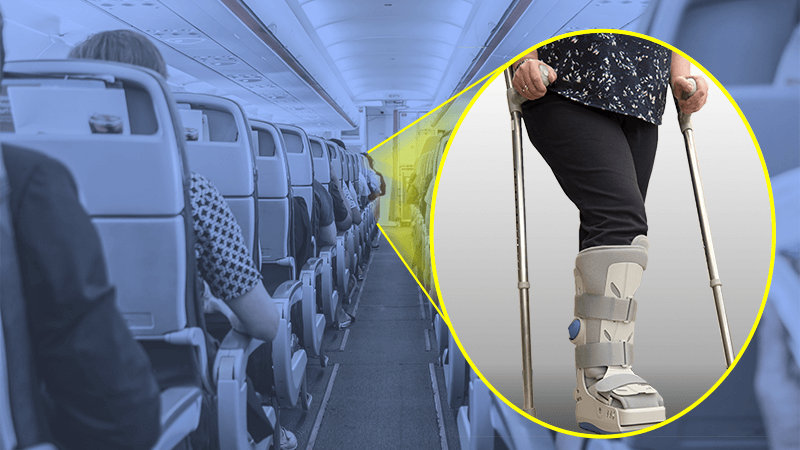Here are two 1/8 inch lifts under the patient’s left foot. The reason I highlight this is that the patient presented for biomechanical assessment with chronic low back, hamstring, right jumper’s knee and foot pain. In my evaluation, he had mild pronation but significant limb dominance associated with short leg syndrome. Standing evaluation noted 3/8 inch short left. Our follow up today after 2 months reveal complete resolution of hamstring and low back symptoms, and no change in knee symptoms.
Welcome to the Podiatry Blog of Dr Richard Blake of San Francisco. I hope the pages can help you learn about caring for foot injuries, or help you with your own injury.
Total Pageviews
Translate
Followers
Wednesday, October 30, 2019
Soccer and Sesamoids: Cleat Adjustment
It is soccer season, or for some schools coming in a month, and I get alot of sesamoid pain coming into the clinic. Typically, one of the cleats is right under the sore sesamoid. I tried to shave down the exact spike at least in half, of course the athletes are terrified I am ruining the cleats. I usually works like a charm.
Labels:
Soccer Cleats,
Soccer Cleats and Sesamoids
Monday, October 28, 2019
Over The Counter Insert Recommendation
Greetings Dr. Blake,
I’ve recently come across your blog, thankfully, and have been attempting to utilize techniques you’ve already suggested. I’ve had nagging type injuries most of my adult life, which have apparently caught up with me this year, as I’ve been to the doctor more than I can ever remember. Most of my issues are back pain, knee pain and toe pain, and I am sure they are all connected in some way. I recently began seeing an Orthopedic doctor after having major swelling in my right knee, which he has diagnosed as Patellofemoral arthritis, trochlear dysplasia and patella maltracking. I have similar symptoms in both knees, so although my right knee is the one that underwent the MRI, I believe I also have similar ailments in my left knee.
While dealing with my knee issues, my left big toe became very swollen and painful. Initially my primary healthcare doctor believed it was Gout, which he began treatment for, but my blood work returned normal, leading him to say he believed I had turf toe. I spoke with the orthopedic doctor during a follow-up on my knee, and he believes I have hallux rigidus, although the testing was not very thorough, in my opinion, and there were no x-rays or MRIs completed.
Regardless, I’ve been dealing with pain in my toe, which has lead to other pains in my foot, due to being unable to walk normally. The toe issues began about three weeks ago, and have thankfully begun to improve. I still feel pain, but it is not constant (weighted or unweighted on foot), and while my walk is still not normal, it is better than it was. I believe part of it is due to being prescribed a steroid dosepak early on, then continuing with ibuprofen, ice, heat baths, self massaging and stretching, and most recently, spica taping has helped a lot!
I know one of your articles mentioned having correct shoes to eliminate pronating, but I am required to wear boots throughout my work day. I am in law enforcement and I have to wear black boots, thankfully, due to my role as a dog handler, they don’t have to be polished, so I’ve mainly utilized hiking boots. I recently bought a new pair, which are supposed to have a more rigid sole, but I was wondering if there were any OTC orthotic inserts you could recommend that would help improve my biomechanics when walking, and hopefully get me to the point of run easier at work. I’ve seen some claim to provide support and correct alignment within your body, but am hesitant to spend as much money some are asking for their products, without solid reviews from others with my issues. Thankfully, I’ve been fortunate to not be tested very much while attempting to deal with these newfound issues, but the day will surely come, and I’d like to be as close to my prior form as I can be. Any additional advice you may have would be greatly appreciate.
I, and I’m sure many others, am grateful you are running your blog and giving out such great advice. The way my own doctors read these issues off made it seem similar to a sprained ankle, where just a brace and time would fix the issues, and not much in-depth information was given.
Thank you for your time and generosity,
Dr. Blake’s comment:
Thank you for your email. And thank you for the kind words. I really like the Red Sole inserts with the black bottom. These are very stable. If the arch is alittle high you can fill it down some or a shoe repair store can take some out of the arch. Let me know how they help. Rich
Dr. Blake’s comment:
Thank you for your email. And thank you for the kind words. I really like the Red Sole inserts with the black bottom. These are very stable. If the arch is alittle high you can fill it down some or a shoe repair store can take some out of the arch. Let me know how they help. Rich
Sunday, October 27, 2019
Off weighting can be done for almost any bottom of the foot problem
Saturday, October 26, 2019
Sesamoid Pain that is Possibly Nerve Pain
I had a wonderful chat today with a young lady from the East Coast. She has been treated for sesamoiditis for a long while, with many opinions, and recently a very smart PT said that it may be her nerves. The sesamoiditis is on both sides, and produced by going from orthotics to no orthotics over night. There has been no swelling, MRIs are negative except some swelling in the tissue around the sesamoiditis. She wore a pair of wedges that put more weight on the sesamoids but actually felt better than flats. She has an intolerance to shoes. She has a documented L4/L5 stenosis at 49 years old with minimal back issues, and disabling foot issues. She had a negative Nerve Conduction Test.
All these findings point to nerve pain as a problem and I told her to seek a peripheral nerve doctor that understands the concept of Double Crush. I told her Nerve Conduction Tests were document nerve damage but not nerve hypersensitivity. She may need an epidural or something that is invasive, but she can start with topical nerve creams like Neuro Eze or Neuro One, neural flossing, warm soaks or contrasts, B complex supplements, TENS units, loose shoes (sorry for winter coming), and no prolonged stretches and learning how not to irritate the sciatic nerve. PTs can teach that.
One of the golden rules I have learned about nerves is that all of the treatments to help can irritate when you first learn them. I have shown each of the above, and most of the time the patients feel great and that they help, and then another patient will say it irritated them immensely. I apologize, and try to modify with less intensity in general. If you treat pain, and what you commonly do irritates a patient, it probably documents you are dealing with nerve pain.
All these findings point to nerve pain as a problem and I told her to seek a peripheral nerve doctor that understands the concept of Double Crush. I told her Nerve Conduction Tests were document nerve damage but not nerve hypersensitivity. She may need an epidural or something that is invasive, but she can start with topical nerve creams like Neuro Eze or Neuro One, neural flossing, warm soaks or contrasts, B complex supplements, TENS units, loose shoes (sorry for winter coming), and no prolonged stretches and learning how not to irritate the sciatic nerve. PTs can teach that.
One of the golden rules I have learned about nerves is that all of the treatments to help can irritate when you first learn them. I have shown each of the above, and most of the time the patients feel great and that they help, and then another patient will say it irritated them immensely. I apologize, and try to modify with less intensity in general. If you treat pain, and what you commonly do irritates a patient, it probably documents you are dealing with nerve pain.
Sesamoid Fracture: First 3 Months of Treatment
I forget how much I like my own video. Here is a discussion of the vital first 3 months of treating a sesamoid fracture. Of course, the first 3 months of treatment may not be the first 3 months you have had the problem. It starts when the diagnosis is made.
https://youtu.be/8cwW2Bmcc0E
Treating Heel Pain: What Type of Orthotic To Start With
In the article below from my friends at La Trobe University in Australia, they discuss the use of custom or over the counter inserts for acute heel pain. I could not agree more, that if there is no other reason but heel pain to use the orthotic devices, it is best to start with over the counter inserts. I like over the counter inserts, like Sole and Powerstep (and there are others), that I can customize if needed. The typical modifications include softening the heel area, and adjusting the arch higher or lower based on patient tolerance.
http://semrc.blogs.latrobe.edu.au/customised-foot-orthoses-better-option-plantar-heel-pain/
http://semrc.blogs.latrobe.edu.au/customised-foot-orthoses-better-option-plantar-heel-pain/
Thursday, October 24, 2019
Metatarsal Pain: Consider Bike Shoes with Embedded Cleat
Had a patient today with chronic bilateral metatarsal pain. As we work through the diagnosis, I suggested to get bike shoes with embedded cleats to wear at least 4 hours per day to decrease the motion across the sore areas. I find thinking about making changes in the biomechanics of the patient can usually make significant improvements. This is even true when you have the patient use those changes for parts of each day.
Wednesday, October 23, 2019
Pain Level 8 in the Heel without Swelling
I had a patient recently with left heel pain normally around 8 on a scale to 10 for several months. The examination showed no swelling. She was unsuccessful in PT treatment, so referred by her PT to see me for an opinion. She was diagnosed as plantar fasciitis, with morning pain, but was not responding to plantar fascial treatment.
My first thought, which became my tentative diagnosis, was nerve pain. She had morning pain, at 8 level, but it never loosened up better than 5-6. She had orthotic devices, and felt some much better when I removed the heel posts that can focus the pressure on the heel area.
She had some sciatica on the same side, although negative straight leg test today. What I did find is very tight hamstrings which can be from neural tension. She felt better with support the foot taping for plantar fasciitis and did hurt only at the plantar fascia.
So, I was getting mixed signals from her. But over the next month, she will
- Wear the orthotic devices with no post
- Wear support the foot taping if it continues to work for her
- Use warm not ice
- Use neural flossing three times a day
- Do no prolonged calf or plantar fascial stretches
- Avoid positions of maximal ankle flex ion (most stretch on nerves)
- Buy Neuro Eze or Neuro One from Amazon and apply three times a day
- Refer to Dr. Irene or Robert Minkowsky for peripheral nerve evaluation
Labels:
Heel Pain Nerve Related,
Heel Pain Severe
Tuesday, October 22, 2019
Plantar Fascial Ruptures: A Video and A Comment
https://youtu.be/eZF0XxUkJIM
Please watch this video about plantar fascial ruptures. This is a good anatomical lesson, but there is so much more to treatment for the majority of patients. I find some patients do not respond well after their initial period of removable cast or bike shoes with embedded cleats and Quick tape from supporththefoot.com. At this time, you have to customize the arch support with functional orthotic devices, and probably add PT, shockwave therapy, and/or PRP injections. Different doctors in your area may be more skilled at any of these treatment components and you need to search them out. Surgery I believe is in the 1% of patients who tear the plantar fascia from partial to complete.
Please watch this video about plantar fascial ruptures. This is a good anatomical lesson, but there is so much more to treatment for the majority of patients. I find some patients do not respond well after their initial period of removable cast or bike shoes with embedded cleats and Quick tape from supporththefoot.com. At this time, you have to customize the arch support with functional orthotic devices, and probably add PT, shockwave therapy, and/or PRP injections. Different doctors in your area may be more skilled at any of these treatment components and you need to search them out. Surgery I believe is in the 1% of patients who tear the plantar fascia from partial to complete.
Where do I go from Here?
Thank you for reading this blog. I am in my 10th year, and I find writer’s block is my daily friend.
My wife and I just got back from walking over 500 miles in Spain along an old, but very relevant in today’s world, pilgrimage trail called the Camino de Santiago. I helped many pilgrims along the way with my Podiatry knowledge. I experienced incredible peace and joy. I was blessed to do it with my wife Patty, the love of my life for 42 years.
I just finished my second book “The Inverted Orthotic Technique” for Podiatrists, and I am working on my third. I hope those who read “Secrets to Keep Moving” were helped. I plan on teaching and writing more next year as I move into semi-retirement. I hope you will continue to bless me with your friendship. Rich
My wife and I just got back from walking over 500 miles in Spain along an old, but very relevant in today’s world, pilgrimage trail called the Camino de Santiago. I helped many pilgrims along the way with my Podiatry knowledge. I experienced incredible peace and joy. I was blessed to do it with my wife Patty, the love of my life for 42 years.
I just finished my second book “The Inverted Orthotic Technique” for Podiatrists, and I am working on my third. I hope those who read “Secrets to Keep Moving” were helped. I plan on teaching and writing more next year as I move into semi-retirement. I hope you will continue to bless me with your friendship. Rich
Thursday, October 17, 2019
Can Patients Fly After Foot and Ankle Surgery? Part 1: What’s the General Risk?
The following is a great discussion on flying risks after foot or ankle surgery. Rich
|
Enjoy my latest trip along the Amalfi Coast in Italy for our 40th Wedding Anniversary.
Enjoy the best Podiatry Song around:
Subscribe to:
Posts (Atom)


























